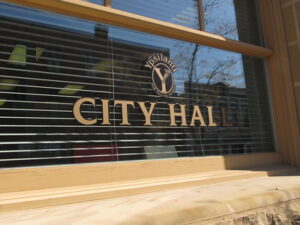Over the past several days, I have looked at the cities and townships in Washtenaw County in terms of the impact of Ann Arbor’s decision in 2003 to adopt a greenbelt strategy. Since 2003, the Ann Arbor Greenbelt has had an undeniable impact on all of Washtenaw County. Most cities and townships didn’t develop a strategic response to the implementation of the Greenbelt in 2003, and as a result, most of Washtenaw County is now 20 years behind this snowball.
The Ann Arbor Greenbelt has slowed development inside the city, while simultaneously raising the cost of housing there. This forced people who might otherwise have moved into the city to move into the surrounding townships instead. It also made the City of Ypsilanti the de facto solution for people with limited income potential and who have nowhere else to live. In doing so, it also transferred the cost burden of building new infrastructure, expanding existing infrastructure, and providing services to low-income residents elsewhere.
That’s good for Ann Arbor, I guess, but it hasn’t been ideal for the residents of Washtenaw County who didn’t get to vote on the Greenbelt, and now have to pay these “transfer costs.” And the burden has been especially harsh on the communities that haven’t fully recovered from the Great Recession.
When adjusted for inflation, the taxable value of properties in the City of Ypsilanti is 25% lower today than it was in 2003 when Ann Arbor voters approved the Greenbelt strategy. Ypsilanti Township has a nearly 17% lower taxable value than it did in 2003.
Save for a few mathematicians, real estate investment wonks, and bankers, no one could have predicted the Great Recession or its devastating impacts on communities like Ypsilanti and Ypsilanti Township. But a greenbelt’s glide path is precisely understood.
Surviving the Ann Arbor Greenbelt Must Be A Team Sport
Thanks to the burgeoning demand for housing in the Ann Arbor area combined with the lack of housing development and the conversion of owner-occupied homes to rental properties, buyers in this area need to come to the table with significant resources to purchase a house virtually anywhere in Washtenaw County.
In the absence of targeted residential housing programs like Dorsey Estates, that create single family houses to be sold below market on a lottery basis to income-qualified buyers, the majority of the Washtenaw County housing market will remain unaffordable for most people.
Washtenaw County needs a collective response to mitigate the (probably unintended) consequences of Ann Arbor’s Greenbelt strategy outside the city limits. These consequences include the need for additional housing, below-market housing, infrastructure, and high-wage employment opportunities. We also need a coherent usage plan for all the agricultural land that Ann Arbor (and Washtenaw County) are “preserving.” Last year, the City of Ann Arbor sought proposals to make agricultural use of as many as 68 parcels of preserved farmland, and they’ve only recently “sold” one (1) divided parcel. Making this agricultural preservation anything other than performative will require the development of agricultural programs at Washtenaw Community College because without a whole bunch of farmers, there’s no real point in preserving a whole bunch of farmland, is there?
Photo Credit: John Eddie , via Flickr














